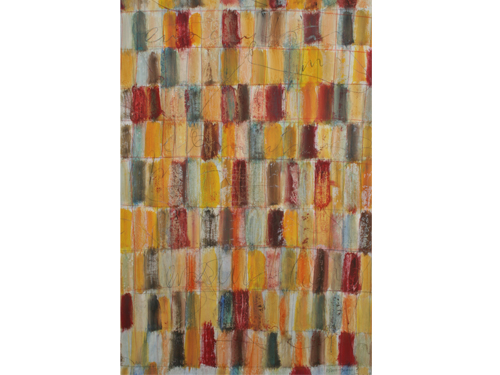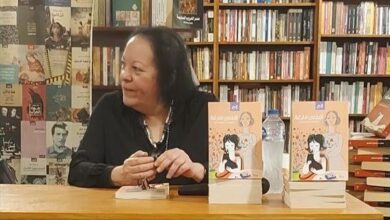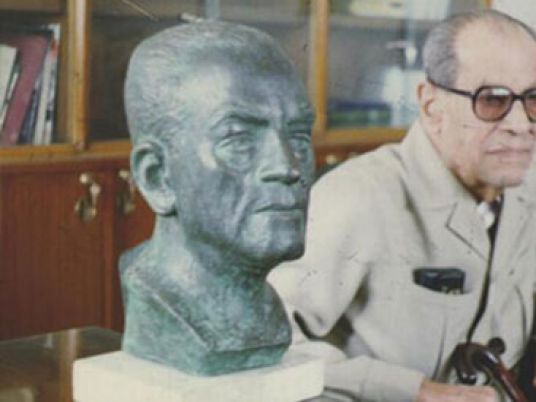
For years, a complete translation of “The Cairo Trilogy,” Naguib Mahfouz's best-known work, “had been sitting in a closet at the AUC Press,” according to the novel's eventual translator, William Hutchins.
In the mid-1980s, this closeted manuscript was nudged out. That’s when "someone there finally decided that it was not publishable [in its condition at the time], for whatever reason." So the translation was given to Hutchins for editing.
“At the time I did not realize quite how difficult ‘Bayn al-Qasrayn’ is to translate, only how important it is," Hutchins says. "So I agreed to help, rather naively, I admit. After only a few lines of trying to edit the extant translation, I decided that I would need to create a fresh translation.”
The novel — eventually translated by Hutchins and edited by Jacqueline Kennedy Onassis — is one of Mahfouz’s seminal works. It has been widely read in English translation and soundly criticized. After the translation came out, Hutchins says, the then-head of the AUC Press told him “in person that I would never translate Mahfouz again.”
This wasn’t quite true, as Hutchins later translated Mahfouz’s “Al-Qahira al-Jadida” as “Cairo Modern.”
In a 1990 essay, "A great novel and a wanting translation," critic Rasheed El-Enany wrote that Hutchins' translation “fails to capture the spirit of the Arabic text and does little justice to Mahfouz's style.”
In 2000, the great scholar Edward Said commented that this was true of a number of Mahfouz translations. The English-language Mahfouz doesn’t sound like Mahfouz, Said wrote, but rather “sounds like each of his translators.”
These issues are neither unique to Mahfouz nor to Arabic literature. Some readers have celebrated C. K. Scott Moncrieff’s translation of Marcel Proust’s “Remembrance of Things Past” as one of the greatest accomplishments of modern translated literature. Others excoriate it and prefer the new translation, titled more literally as, “In Search of Lost Time.”
Most Mahfouz translators edge around this topic. Catherine Cobham, who translated Mahfouz’s “The Harafish,” agrees that “some of his works are ripe for re-translation” without naming any. Raymond Stock, who has translated seven books of Mahfouz’s, says that a number of the novels “could use significant revision and/or re-editing. Everyone directly concerned knows which ones they are — as well as many readers, of course.”
The translation issues exist, in part, because Mahfouz’s novels were among the first works translated from Arabic to English for a popular audience. When his first books were translated into English in the 1970s, those in charge of the process believed that no one translator was up to the task, opting instead to assemble teams of translators.
Denys Johnson-Davies wrote about this method of team-translating in his “Memories in Translation.” The initial translations, he wrote, were “undertaken by a native speaker of Arabic,” after which they were “handed over to one or more persons who would 'iron out' the initial text.” Johnson-Davies refused to be part of one of the teams.
But, Johnson-Davies added, “Whereas in my opinion it’s not the ideal method of translation, the AUC Press project to translate works by Naguib Mahfouz did produce a number of translations of his novels, and it was due to the fact that there was a sizeable body of his work available in English that he won the Nobel Prize.”
Critic Rasheed El-Enany has suggested it was not the English translations, but rather the French translation of “The Cairo Trilogy” that was instrumental in swaying the Swedish Academy. But in either case, English translations of Mahfouz’s work, wanting though they may be, have been integral to bringing foreign readers to Arabic literature. And this, in turn, has opened doors for other Arabic writers — into English and beyond.
But, as with Proust’s great work, now is perhaps the time for re-translation and re-examination of Mahfouz’s great novels. The AUC Press has also been thinking along these lines: Their first re-translation was issued on 11 December, the hundredth anniversary of Naguib Mahfouz’s birth. It was a fresh version of “Midaq Alley” by acclaimed translator Humphrey Davies. The press chose “Midaq Alley” because, according to AUC Press’ R. Neil Hewison, “This was the one where critics universally said it needed re-translation.”
The press also has plans to re-translate other works, Hewison said, although they don’t currently have a list of priority titles.
“Maybe ‘The Beginning and the End,’” he said.




